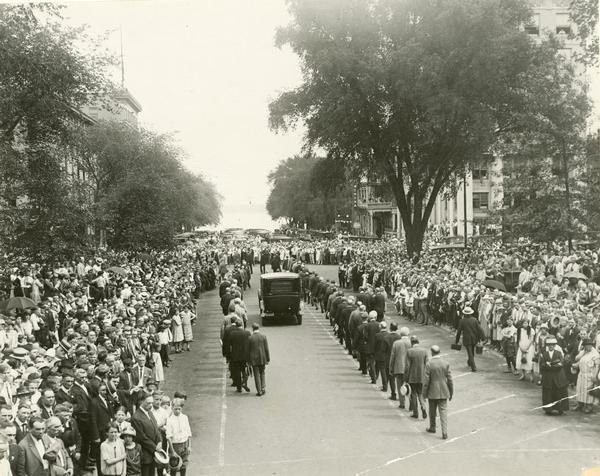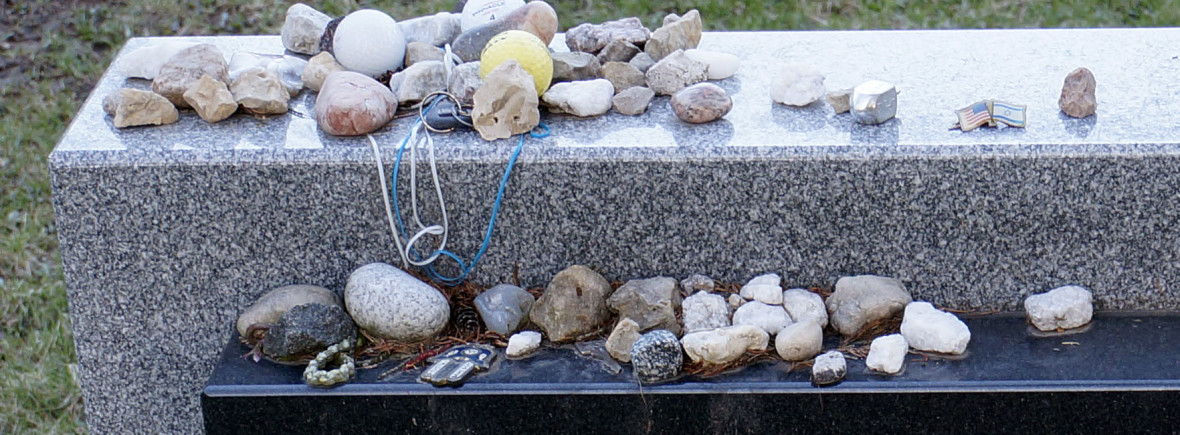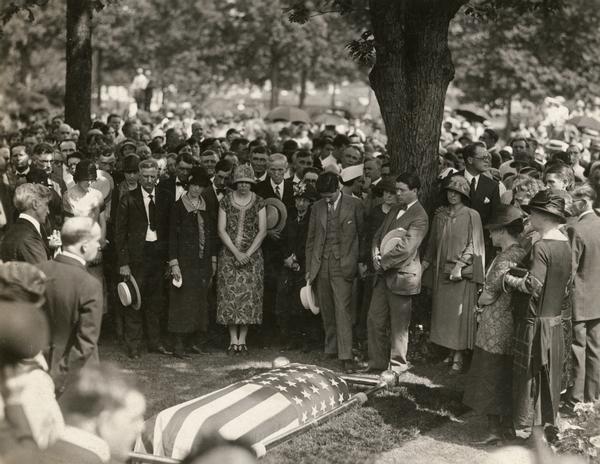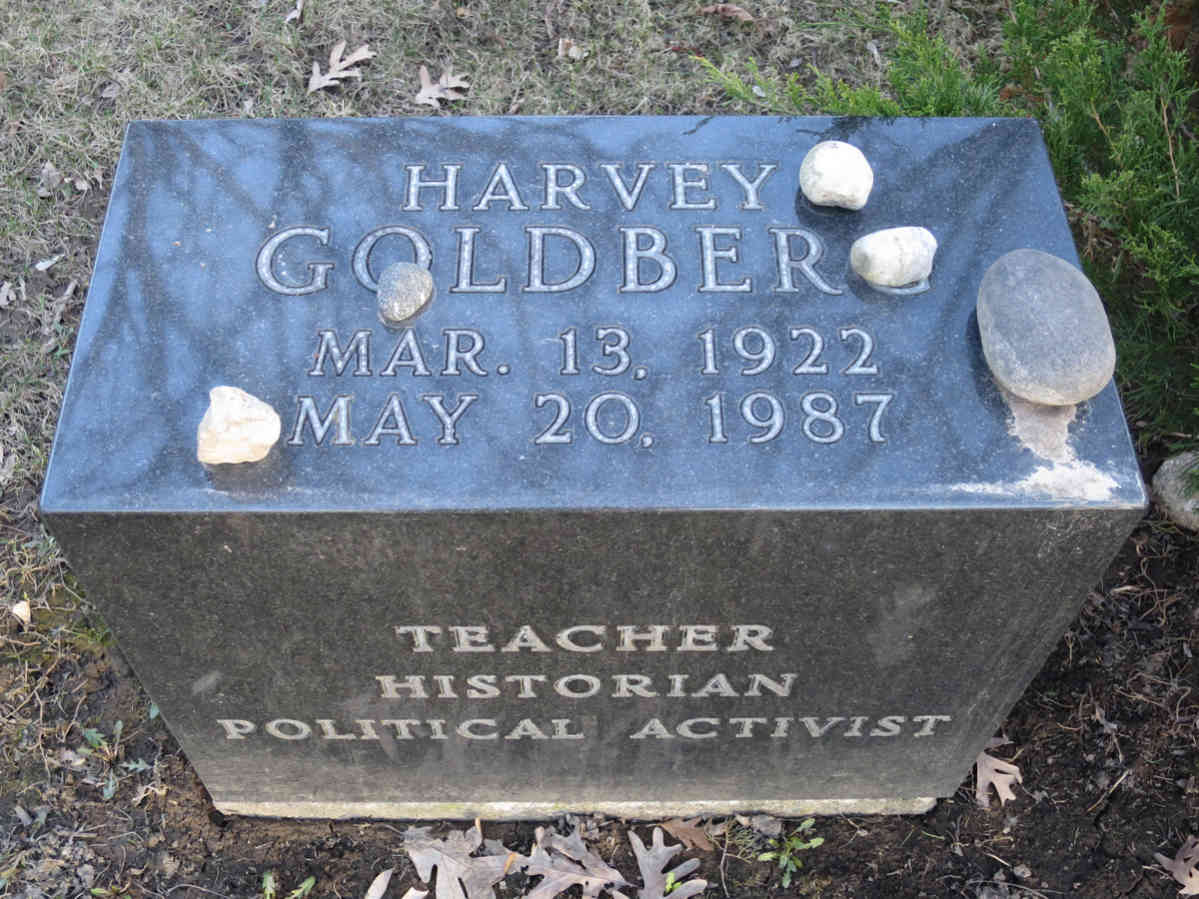This is a guide to the various commemorative rituals that are practiced within Forest Hill Cemetery. We encourage reflection on the meaning of such practices, and the values that are embodied within them at both the community and individual level.
WHAT IS A RITUAL?
While Forest Hill Cemetery has only been around since 1857, the amount of experience and memory that is accumulated within this small area exceeds multiple centuries as each individual grave has a story of its own to share with the visitor. Consequently, while one may be overwhelmed by the number of graves that exist here, we should always remain aware that each site is unique in its own way. The physical presence of the dead may be absent, but it is through the memories they leave behind that they continue to inform the living. In this sense, within the sacred space, place, and time of the cemetery, rituals are the embodiment of the relationship between past and present generations. They are practices that represent how people remember and memorialize loved ones, re-establishing connections with them at both the individual and community level. Whether it be the fresh dirt of a gravesite that alludes to a recent funeral, or the material objects that are left behind by a visitor, traces of a ritual thrive at Forest Hill Cemetery.
Rituals are part of a larger web of relations that remain invisible to the outside observer. The practices a visitor may perform at the cemetery is frequently prescribed by the social values and norms that they adhere to in remembering the departed. At the same time, rituals are also filled with deep meaning that reflect the particular relationships that exists between two people. They are very personal moments in which to reflect upon individual memories with the dead, requiring people to understand how the remembered person has influenced their own lives. As a result, rituals include not only funerary rites or holiday commemorations, but also such mundane practices as the act of leaving gifts at the gravesite. In analyzing these practices, this section seeks to provide the reader with a broad overview in regards to how rituals operate so as to provide them with the analytical tools necessary to understand acts of commemoration.
FUNERALS
Within the sacred space of the Forest Hill Cemetery, perhaps the most powerful ritual is the funeral. Although such services are generally short, much of a person’s life can be told through this ceremony. For instance, the solemn experience of a veteran receiving military funeral honors begins when the casket is brought to the grave. A short benediction that blesses everybody in attendance is provided by the chaplain presiding over it. Following this, members of a firing squad provided by one of the branches of the armed forces or a local Veterans of Foreign Wars (VFW) post is brought to attention and proceeds to fire three volleys of blank cartridges into the air. Another member proceeds to play “Taps,” a military musical piece, on a ceremonial bugle. The flag that drapes the casket is then folded by the military representatives and presented to the family after the rendering of a salute. During this moment, participants remain silent as they contemplate the life and legacy of the commemorated person.

The Funeral Procession of Senator Robert La Follette, Sr., in 1925. Wisconsin Historical Society Image 32419.
While the origins of many funerary rituals remain unknown or contested, the meaning imbued within them remain potent because they ultimately embody the values or narratives that bind a community together. Consequently, much of the vibrant symbolism of a funeral can remain invisible to an outside observer. The Jewish tachrichim, or white garment that wraps the body inside a casket, signifies the completion of an elaborate purification process that promises that the remembered person is prepared for burial, while the folding and presentation of the flag represents the nation’s gratitude for a veteran’s service. A ceremonial crossbow that is sometimes fired at a Hmong funeral is also meant to provide protection for the spirits. In this sense, funerary rituals are mnemonic practices that remind participants of the journey a particular person has taken, as well as the community he or she called home. They ultimately allow people to reflect upon the meaning of a life that has been lived and the impact of that meaning on their own lives, informing them that life as they know it could not have been possible without the person who is remembered.
The funeral is an opportunity for a person to understand the meaning of loss and overcome such grief. For Christian ministers who preside over a funeral, popular verses recited during the benediction include those from 1 Corinthians 15, which celebrates the Resurrection of Christ and prophesizes the rise of the dead. Within the Jewish faith, Psalms that assure the protection of the dead and living are prevalent, while Hmong funerals are organized to help direct the departed soul back to their ancestors in the spirit world. Consequently, funerary rituals not only eulogize those who have passed on, but also provide comfort and hope to the bereaved. In this sense, within the sacred time of the cemetery, both the past and the future constantly interrupt the present. Through notions of remembrance and redemption, memories of loved ones allow people to maintain relations with them despite death. Consequently, rituals embody not only the values of a particular community, but also a distinct temporality that is defined by shared personal histories and hopes.
FLOWERS
The following sections examine the ritual of leaving objects at gravesites. As you walk through Forest Hill Cemetery, you will notice that flowers are the most popular gift of choice. While such a tradition has been around as far back as the ancient Roman days, in more recent history, it became widespread within the United States as a result of the inauguration of “Decoration Day.” Established three years after the end of the Civil War in 1868, the new national holiday was a time for American citizens to commemorate the graves of fallen soldiers by decorating them with flowers. Those in charge of creating “Decoration Day” had selected May 30th as the date because it was when the greatest amount of flowers had bloomed across the country. We now call it “Memorial Day,” and it is still a favorite time for people to visit cemetery plots and place flowers at the graves of loved ones. Within Forest Hill Cemetery, the importance of flowers is represented by the number of spigots and empty plastic cartons seen around the place.

Decoration Day Parade near Capitol Park, Madison, in 1894. Wisconsin Historical Society Image 67865.
While the offering of flowers as gifts may seem quite banal, to the person who brought them, the choice of flowers frequently entails much meaning. For instance, the color or type of flower a person chooses may symbolize a certain virtue. Red flowers can represent love, while chrysanthemums and white daisies are said to signify truth. The flower may also be a loved one’s favorite, or may suggest a particular moment shared with that person.
FLAGS
As one of the first U.S. National Cemeteries in Wisconsin, Forest Hill Cemetery includes several areas dedicated to military veterans. The symbolic importance of flags within military culture is apparent to anyone who visits them. There are around two hundred and forty Union veterans buried at the Union Soldier’s Lot, which is owned and maintained by the Department of Veteran Affairs. A guy-wire supported flagpole that flies the US flag all throughout the year stands in the center of this section. During Memorial Day, it is lowered half-mast to commemorate the people who died while serving in the military. This ritual represents national respect and mourning, and is thought to have begun in Europe during the seventeenth-century to make room for the “invisible flag of the dead.” Smaller flags, though, are also frequently placed at individual grave sites. Another area dedicated to military veterans from the Spanish-American War and afterwards can be found near the effigy mounds, although it is unaffiliated with the Department of Veterans Affairs. The military rituals that are performed at the Union Soldier’s Lot are also observed here.
In addition to Union soldiers, there are also some one hundred and forty Confederate soldiers interred at Forest Hill Cemetery in a section known as Confederate Rest. The majority of them died while being held prisoner at Camp Randall during the Civil War. Unlike the lot for Union soldiers, though, this area is also not affiliated with the Department of Veterans Affairs, and the rituals concerning the memorialization of the dead are highly contested here in Madison. An earlier rule prohibiting the raising of the Confederate flag was reversed in 2001 after complaints from local Civil War re-enactment groups. Now, it is permissible to fly the Confederate flag on the flagpole in Confederate Rest on Memorial Day to commemorate the soldiers there.
STONES
Another popular practice you will notice at Forest Hill Cemetery is the placing of stones on top of graves, which is a significant custom within the Jewish religion. While the exact origin of using stones to remember a person is debatable, it is an old tradition that has references within the Hebrew Bible. Although such a practice may have once had the practical purpose of protecting graves from animals, it is now a powerful symbol of Jewish diasporism, signifying a person’s identification as being part of “the people of Israel.” In addition, this ritual has also come to represent personal respect because it signifies that the grave has been visited and that the living have not forgotten their loved ones. Like flowers, many people customize their choice of stones so that they may be from a place that was enjoyed by the person who is remembered, or symbolize a particular memory. Since this ritual is not governed by any commandment, though, it is not the stones themselves, but the act of remembering that is most important. Consequently, when rocks are not available, it is permissible for a person to use coins or bits of glass as a substitute.
Within the Jewish tradition, the community plays an important part in the commemoration of departed members. As a result, the “Jewish sections” at Forest Hill Cemetery draw strong boundaries in regards to who can be buried there because of religious laws (halakha) that determine notions of purity, and because of the practical need to protect graves from outside intrusion. In this sense, the meaning produced by rituals is frequently related to the larger Jewish community and its history . Within Madison, the first Jewish people came to this city during the 1850s, and their numbers grew over time as a result of further emigration from Europe. While the community initially endured cycles of centralization and decentralization as members frequently moved on to other cities, it became more stable during the 1930s with the creation of the Jewish Central Committee of Madison. This social cohesion is symbolized by the distinct congregation of their graves on the southwest portion of Forest Hill Cemetery.
FOOD AND DRINKS
When walking along the western part of Forest Hill Cemetery, you will notice that several of the distinct stone graves there have food and drinks left at the site. This is because the ritual of providing offerings to the dead is an important custom within the Hmong culture. The first Hmong people came from Southeast Asia to Wisconsin during the 1970s in the aftermath of the Vietnam War. Their presence, then, is a relatively recent one within the cemetery. As refugees who suddenly found themselves within a very foreign land, many Hmong people relied on the support of community members to adjust to the new lifestyle. Their consolidation within the cemetery is a testimony of the strong bonds they forged in Madison. In addition, the Hmong belief system also informs people that the dead require the help of the living to successfully reach the afterlife. Consequently, their demands continue to weigh upon the family and the community even after they have parted from this world. In this sense, the living are brought into a material exchange with the dead that is characterized by the offering of gifts, providing provisions for the loved one’s journey to the afterlife.
In satisfying the remembered person’s expectation of tangible gifts, the objects that are left behind frequently have deep meaning for the visitor. Consequently, they are an embodiment of the history between the living and the dead. As the photo above shows, what a person decides to bring to comfort the deceased can be very diverse. While they usually consist of a favorite food or drink, such gifts can also include a variety of other objects that symbolize the reciprocal relationship between past and present generations.
the role of rituals
Today, the process of preparing bodies for burial is a highly mediated one that involves multiple institutions, including hospitals and mortuaries. This may seem natural to many of us, but adjusting to this modern geography of death remains contentious for many people, especially those who follow cultural rules that cannot always be accommodated by the places that are entrusted with caring for the bodies of loved ones. Such anxiety, though, is part of a larger phenomenon that is related to the secularization of daily life. In reflecting upon this transformation, the French philosopher Michel Foucault observes that within modern society, the cemetery has become the “other city” that is separate from the metropolis. Firm boundaries are drawn between the living and the dead, with the latter being confined to the temporality of the past and the spatiality of the gravesite. Rituals, however, are an important way in which we can continue to maintain our relations with loved ones. The lighting of candles, the folding of the flag, and the giving of gifts are all forms of commemoration that remind us that we will always remain indebted to the dead as a result of the various experiences, knowledge, and inheritances they have left for us. It also informs us that the departed have as much a claim to the present and future as we do. Consequently, the sacred place, space, and time of the cemetery reveals the different ways in which we can produce meaning from experiences of death and loss, and provides many invaluable stories and lessons in regards to not only how we can understand our sense of community, but also our place within this world and how we came and will come to be.

The Funeral Ceremony of Governor Lucius Fairchild in 1896. Wisconsin Historical Society Image 23247.
ACKNOWLEDGEMENTS
The authors would especially like to thank Hiam Garner, President of the Jewish Burial Association of Madison, Reverend Scott Gustafson, Chaplain in the Wisconsin Army National Guard, Jonathan Pollack, Instructor at Madison Area Technical College, and Roger Swingen, Dane County Firing Squad Captain for the Veterans of Foreign Wars, for sharing their experience and wisdom.
RESOURCES ON RITUALS
Bourdieu, Pierre, Outline of a Theory of Practice. Cambridge: Cambridge University Press, 1977.
Foucault, Michel. “Of Other Spaces: Utopias and Heterotopias.” Architecture, Mouvement, Continuite 5 (1984): 46-49.
Langford, Jean. “Gifts Intercepted: Biopolitics and Spirit Debt.” Cultural Anthropology 24:4 (2009): 681-711.











